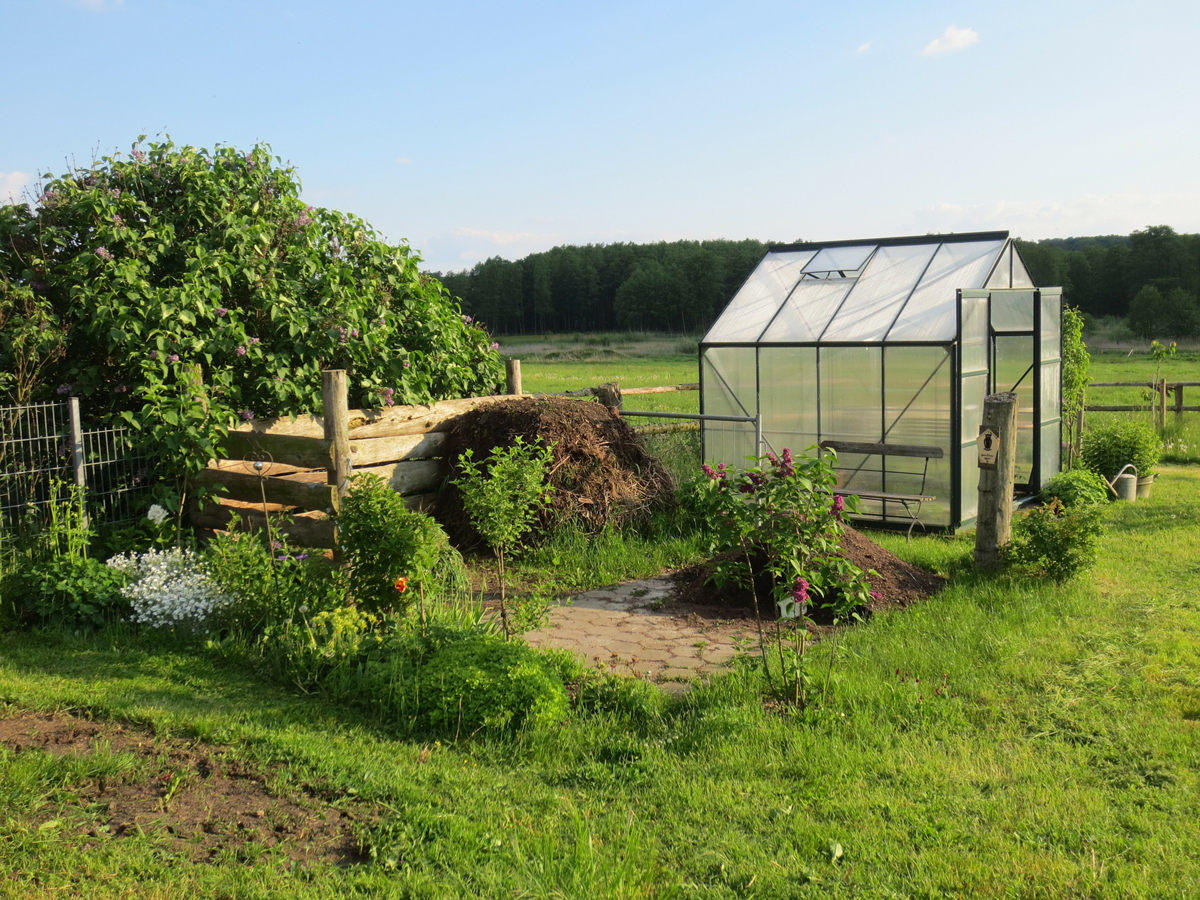Greenhouse Design and Site Planning
Backyards, rooftops, crop production fields, from the Arctic Circle to the equator – almost every climate and environment can benefit from some kind of greenhouse. Controlling the environment in these greenhouses can mean more heat, more shade, supplemental lights, insect screens, etc. But, lets look at some common sense approaches and basic deciding factors one can use in basic site planning for a greenhouse:
Light
Just as in planning a garden, greenhouse growers should be very aware of changing light patterns throughout the seasons. Even in an open field, one needs to be aware of orientation to the direction of sun. Intelligent site planning in a backyard can save a lot of energy and may allow growers the edge that will make their plants thrive.
Look for Deciduous Trees
Cover from deciduous trees can give the much needed shading in the summer, which is probably the most difficult time of year to keep anything thriving in the average backyard greenhouse. Also, remember that the angle of light changes from winter to summer, as well as the rise to fall points on the horizon. This will help with orientation to other buildings, high fences, etc.
Foundation and Site Drainage
Consider the type of foundation on which the greenhouse will be installed and consider the drainage and elevation of the site. The drainage of the site is crucial. Always, factor in what foundation requirements are for each model and type of greenhouse.
Energy Issues
Your greenhouse will need energy input to power fans, heaters, etc. Thinking out the distance from your power and water source is a very necessary first step in a friction free greenhouse building process.
Once your power is there, you will need it for a variety of environmental controls. Fans (both ventilation and circulation), motorized controls for vent windows, evaporative cooling pumps, heaters (if electric), etc.
Ventilation
Its probably the most important issue in a greenhouse, without it the greenhouse quickly turns into a solar oven in which no plant can survive. Ventilation in the greenhouse is maintained through passive vent windows on the sides and ridge of the greenhouse and/or through fans and shutters mounted on opposing ends of the greenhouse
Circulation fans are important to distribute heat and agitate plants preventing soft growth and stretchy internodes.
Evaporative coolers work by pushing or pulling air through a water-saturated pad and into the greenhouse. They are most efficient in dry climates, but work in humid tropical climates as well. Misting systems with natural ventilation are also a viable option for cooling the greenhouse in some climates.
Coverings, Insulation, and Light Transmission
I am going to break down greenhouse coverings into three basic material groups: polyethylene film, polycarbonate, and glass. Each has advantages and disadvantages.
Polyethylene film, or poly film, is the film plastic sheeting commonly seen on commercial greenhouse ranges and inexpensive hoop style greenhouses. The typical lifespan of the material is about 4 years, after which it will need to be removed and replaced. For some, this is the nature of the business and is budgeted into the equation of growing in a greenhouse. For others, it’s a maintenance inconvenience that isn’t worth the headache and they prefer (and can afford) a more permanent and expensive greenhouse covering material.
Many growers use a double layer of poly film with a blower fan to maintain a pillow of insulating air between them. This setup actually provides some of the best insulation possible.
Light transmission levels are normally in the high 80’s% range for a single layer of clear poly film. White opaque poly film is a good option for growers in really bright and/or tropical locations. Light transmission for the white poly film is about 55%.
Polycarbonate panels are the rigid greenhouse covering of choice for many greenhouse owners. Panels will last indefinitely though they will start to show signs of UV degradation after about 10 years. There are two main types of polycarbonate panels: single wall corrugated and multi-wall insulated.
I typically don’t recommend single-wall panels except in areas and for applications where insulating value is of no consequence. The multi-wall panels are almost always going to be an advantageous choice. The multi-wall panels help with energy-efficiency whether your goal is to keep cool or keep warm.
Light transmissions range throughout the 80% percent range.
Glass is great! I love the feeling of being inside a perfectly transparent climate controlled greenspace. However, single pane glass is going to be hot in the summer and cold in the winter. The greenhouse frame will also need to be much more substantial to support the weight of all that heavy glass. Shipping costs also reflect the weight of glass.
Many greenhouse growers choose glass despite its expense and fragility because it’s unique attributes are quite precious: Glass gives near 100% light transmission of all spectrum. Glass last forever and is not subject to degradation from ultraviolet rays. Last but not least is the huge aesthetic advantage of being in a glass structure.
The Author:
2010 Gothic Arch Greenhouses, Greenhouses Manufacturer, Greenhouse Project Consulting, Greenhouse Design, Greenhouse Sale Service
